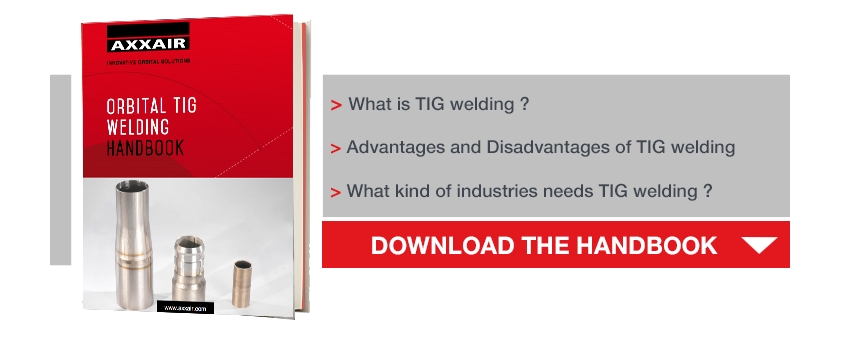Orbital welding technologies make the machines easy to use, while providing quality results.
Although numerous training centers in France provide training to become a welder, the qualification of welders is strictly regulated according to the directives of a European standard. The main aim of this standard is to verify the skill and dexterity of a welder in performing precise welding work, and to ensure that candidates are suitably skilled to implement precise tasks.
DIFFERENT APPROACHES CAN BE TAKEN BUT NUMEROUS STANDARDS NEED TO BE RESPECTED WHEN TRAINING TO BECOME A WELDER!
As there is extreme variation in welding processes and techniques, welders often pursue further training to hone their skills and specialize in one area.
The profession operates under a very strict, standards-based regime that regulates the type of metal that is used, the different types of welding, and the different sectors where welders may work. Standards must be approved by an independent organization.
In 2015, the new standard NF EN ISO 9606-1 defined the skills-based testing for fusion welding steel using manual or partially-automated welding techniques. It delivers a set of technical rules that allow these skills to be recognized and accepted on a standard basis, regardless of the type of product.
Meanwhile, ISO 24394:2008 specifies the skills that are required by welders and welding operators for fusion welding metallic components to be used in aerospace applications. It assesses the welders’ knowledge of welding theory, their hand-eye coordination and their knowledge of a series of technical definitions.
These are the types of training that can be pursued:
- three CAPs, casting skills, industrial boiler making and toolmaking with mechanical castings
- three professional baccalaureate degrees in industrial boiler making technician, tool technician or machining technician
- BTS CRCI - design and production in industrial boiler making
As there is extreme variation in welding processes and techniques, welders often pursue further training to hone their skills and specialize in one area.
The profession operates under a very strict, standards-based regime that regulates the type of metal that is used, the different types of welding, and the different sectors where welders may work. Standards must be approved by an independent organization.
In 2015, the new standard NF EN ISO 9606-1 defined the skills-based testing for fusion welding steel using manual or partially-automated welding techniques. It delivers a set of technical rules that allow these skills to be recognized and accepted on a standard basis, regardless of the type of product.
Meanwhile, ISO 24394:2008 specifies the skills that are required by welders and welding operators for fusion welding metallic components to be used in aerospace applications. It assesses the welders’ knowledge of welding theory, their hand-eye coordination and their knowledge of a series of technical definitions.
The complete guide to orbital welding with TIG >>
AUTOMATED WELDING: A SUPPORT FOR MANUAL WELDING
Because these vital qualifications are so comprehensive, they constitute a barrier to entry the welding profession. It is now widely acknowledged that the automation of these welding processes is coming to the rescue of manual welding and that it tends to be used as a substitute for the more basic welding tasks.
In parallel, there is a high demand for qualified welders in certain, highly specialized sectors such as nuclear engineering or the aerospace industry. The profession of operating the orbital welding machine comes into its own when performing automated or robotized installations when assembling structural components. The enhanced levels of quality and safety attained this way can be achieved by workers who are not expert welders, but who can use the machines without holding expert qualifications. Their ease of use, thanks to a simplified setup process, opens all the doors.
>> Automated welding: what are the advantages for the welders?
ORBITAL WELDING : EASE OF USE COMBINED WITH HIGH QUALITY
Orbital welding machines are easy to use, they can be operated even by inexperienced welders. But these welders need to understand all implications of the orbital process and therefore need to be trained by experts. During this training, the entire process is taken care of: cutting, beveling and preparing the pipes before welding. Preparation typically represents 80% of a welder’s job. With automated solutions, welders are directly involved in the exceptional levels of quality and safety that can be achieved.
Orbital welding machines innovate by setting new standards for precision and ease of use.
The electronic compensates in real time for the movement of the welder and some machines can be used by non-expert welders while still delivering quality work. Even so, in view of the complexity of new technology and the industrial world in general, the demand for highly qualified expert welders persists.
You want to know more about orbital TIG-welding? Download our guide for free!



